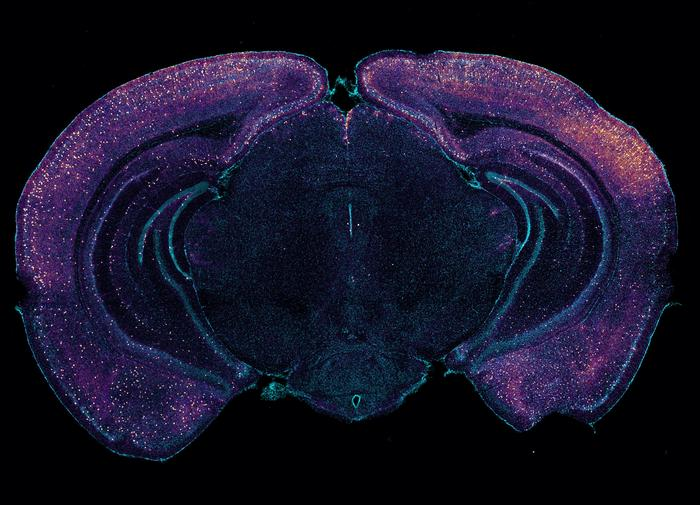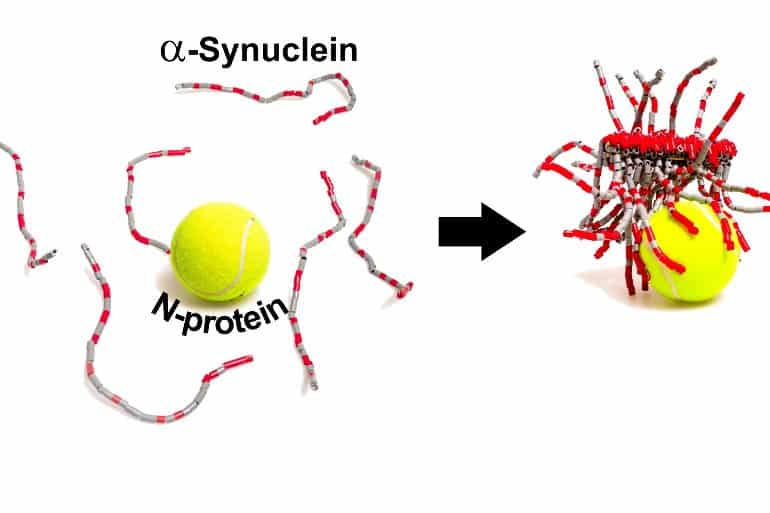The Centers for Disease Control and Prevention recently estimated that more than 16 million Americans are living with cognitive impairment.1 Cognitive impairment can be ascribed to a variety of disorders, some of which can be treated (e.g., severe depression or effects of medications) but others of which may signal the development of incurable dementias, such as Alzheimer’s disease. For these reasons, the development and improvement of diagnostic procedures — and neuroimaging procedures, in particular — that aid in characterizing cognitive impairment is a health care priority. Improved diagnostic evaluation of patients with cognitive impairment may also enhance the development of therapies, since reliable diagnoses are critical to the success of clinical trials.
Recently, the Food and Drug Administration (FDA) approved a new radiopharmaceutical agent to assist clinicians in detecting causes of cognitive impairment other than Alzheimer’s disease. Florbetapir F18 injection (Amyvid, Eli Lilly) is indicated for positron-emission tomographic (PET) imaging of the brain in cognitively impaired adults undergoing evaluation for Alzheimer’s disease and other causes of cognitive decline.2 Florbetapir binds to amyloid aggregates in the brain, and the florbetapir PET image is used to estimate the density of β-amyloid neuritic plaque. As a component of a comprehensive diagnostic evaluation, the finding of a “negative” florbetapir scan (as qualified below) should intensify efforts to find a non–Alzheimer’s disease cause of cognitive decline. Florbetapir brain imaging is a new type of nuclear medicine imaging, and the interpretation of the image requires special training. The unique features of the imaging information also require careful consideration when the scan results are integrated into a diagnostic evaluation.
Although the pathophysiological consequences of accumulation of β-amyloid in the brain are uncertain, neuropathological identification of amyloid plaques, typically at autopsy, has long been recognized as essential to confirming the diagnosis of Alzheimer’s disease. Because β-amyloid plaques in the brain have been described as a “hallmark” of Alzheimer’s disease, some clinicians may regard the florbetapir scan as a new test for the disease.3 But the drug was developed exclusively to estimate the density of β-amyloid neuritic plaque in the brain, and these plaques have been detected in patients with a variety of neurologic disorders, as well as in older people with normal cognition (see Florbetapir F18 Scan Usage: Information Summary).
Florbetapir is an 18F-labeled ligand that, in nonclinical studies, was shown to bind to β-amyloid aggregates in postmortem sections of human brains and in brain homogenates.4 In the main clinical studies supporting FDA approval, the accuracy of florbetapir scans was assessed in the brains of terminally ill patients who participated in a brain-donation program. The patients, who had a range of underlying cognitive function, underwent florbetapir scans and were followed until they died. The premortem scan results were subsequently compared with the brain autopsy findings. In all the clinical studies, the florbetapir scans were independently interpreted by multiple readers who had completed training in interpreting florbetapir images.
A binary method of interpretation was developed for relating “positive” or “negative” florbetapir scans to neuropathologically defined categories of density of β-amyloid neuritic plaque. The method designated a positive florbetapir scan as categorically indicative of “moderate to frequent” β-amyloid neuritic plaques, as defined by the consensus criteria for Alzheimer’s disease neuropathology established by the National Institute on Aging. In 59 patients who underwent florbetapir scans and autopsy, scan sensitivity for the detection of moderate to frequent β-amyloid neuritic plaques was 92% (range, 69 to 95), and scan specificity was 95% (range, 90 to 100), on the basis of the median assessment among five readers (ClinicalTrials.gov number, NCT01447719).
One of the challenges of the florbetapir clinical development program was that terminally ill patients are not representative of the population that is likely to undergo florbetapir scanning in medical practice. In addition, β-amyloid content could change between the time of live brain imaging and the time of autopsy. More than 20% of autopsies in the main clinical studies were performed more than a year after the live brain imaging (NCT01447719 and NCT01550549).
To evaluate scan reliability in a wider population, a clinical study had new readers examine images from non–terminally ill patients with Alzheimer’s disease or mild cognitive impairment, as well as persons with normal cognition. The previously obtained images from autopsied patients were also included in the study (NCT01550549). Among five readers who interpreted images from the 151 subjects, the kappa score for interrater reliability was 0.83 (95% confidence interval, 0.78 to 0.88), with the lower bound of the 95% confidence interval exceeding the prespecified reliability success criterion of 0.58. For the autopsy subgroup of 59 subjects, the median scan sensitivity was 82% (range, 69 to 92), and the median scan specificity was 95% (range, 90 to 95) for the five new readers.
Clinical and nonclinical studies verified that florbetapir scans can provide neuropathologically accurate and reliable estimations of the density of β-amyloid neuritic plaque in the brain. Nevertheless, as with other imaging methods, there is potential for clinical interpretive error. In the studies of scan accuracy, such errors were uncommon but when present were due mainly to false negative results, as determined by the density of β-amyloid neuritic plaque at autopsy.
Reader training was an especially important element in the clinical development of florbetapir, because the image-interpretation process differs markedly from that typically used in nuclear medicine. For example, the image reader must be proficient in distinguishing white from gray matter, a distinction that may be particularly challenging in patients with cortical atrophy. Unique “gray–white contrast” characteristics of florbetapir images must be recognized as signals of normal or abnormal isotope distribution (see figureTypical Negative and Positive Florbetapir Scans.). In addition, cognitive status and other clinical or diagnostic information are not considered during the interpretation of florbetapir images. The sole goal of the reader is to determine whether a scan is negative or positive, and this determination should be made only by readers who have completed the sponsoring company’s dedicated training program. The success of the reader-training process will be further evaluated in a postmarketing study of image interpretations performed under the typical conditions of clinical practice.
In approving florbetapir, the FDA did not require clinical data assessing the effect of florbetapir imaging on clinical management or patients’ health. The FDA code of regulations (in 21 CFR 315.5[a]) mandates that the effectiveness of a diagnostic radiopharmaceutical agent should be determined by an evaluation of the ability of the agent to provide useful clinical information related to the proposed indications for use. FDA guidance further recognizes that imaging information may in some instances “speak for itself” with respect to clinical value5 and that diagnostic approval may therefore not require assessment of the effects on clinical management or health outcomes. Two FDA advisory committees endorsed the implicit clinical value of information obtained from brain β-amyloid imaging. Florbetapir approval was based on this endorsement and on clinical data showing sufficient scan reliability and performance characteristics.2
The ultimate clinical value of florbetapir imaging awaits further studies to assess the role, if any, that it plays in providing prognostic and predictive information. For example, the prognostic usefulness of florbetapir imaging in identifying persons with mild cognitive impairment or cognitive symptoms who may be at risk for progression to dementia has not been determined. Nor are data available to determine whether florbetapir imaging could prove useful for predicting responses to medication. These concerns prompted the FDA to require a specific “Limitations of Use” section in the florbetapir label.
The FDA approval of florbetapir F18 injection sets the stage for future studies that increase the value of the technique in addressing the diagnostic challenges associated with cognitive impairment. Further investigation of the drug in the postmarketing context is consistent with the commitment of the FDA to the development of imaging products that aid in the diagnostic evaluation of cognitively impaired patients.
Florbetapir F18 Scan Usage: Information Summary.
A negative florbetapir scan:
• indicates sparse to no neuritic plaques.
• is inconsistent with a neuropathological diagnosis of Alzheimer’s disease at the time of image acquisition.
• reduces the likelihood that a patient’s cognitive impairment is due to Alzheimer’s disease.
A positive florbetapir scan:
• indicates moderate to frequent amyloid neuritic plaques.
• may be observed in older people with normal cognition and in patients with various neurologic conditions, including Alzheimer’s disease.
Important florbetapir scan limitations:
• A positive scan does not establish a diagnosis of Alzheimer’s disease or other cognitive disorder.
• The scan has not been shown to be useful in predicting the development of dementia or any other neurologic condition, nor has usefulness been shown for monitoring responses to therapies.
References
- 1
Promoting brain health. Atlanta: Centers for Disease Control and Prevention, 2011 (http://www.cdc.gov/aging/pdf/cognitive_impairment/cogImp_genAud_final.pdf).
- 2
Highlights of prescribing information: Amyvid (florbetapir F18 injection). Silver Spring, MD: Food and Drug Administration (http://www.accessdata.fda.gov/drugsatfda_docs/label/2012/202008s000lbl.pdf).
- 3
Okie S. Confronting Alzheimer’s disease. N Engl J Med 2011;365:1069-1072
Full Text | Web of Science | Medline
- 4
Lister-James J, Pontecorvo MJ, Clark C, et al. Florbetapir F-18: a histopathologically validated beta-amyloid positron emission tomography imaging agent. Semin Nucl Med 2011;41:300-304
CrossRef | Web of Science
- 5
Guidance for industry: developing medical imaging drug and biological products. Part 2: clinical indications. Washington, DC: Department of Health and Human Services, Food and Drug Administration, Center for Drug Evaluation and Research, Center for Biologics Evaluation and Research, 2004 (http://www.fda.gov/downloads/Drugs/GuidanceComplianceRegulatoryInformation/Guidances/UCM071603.pdf).
Source: NEJM
44.276672
-85.874794



